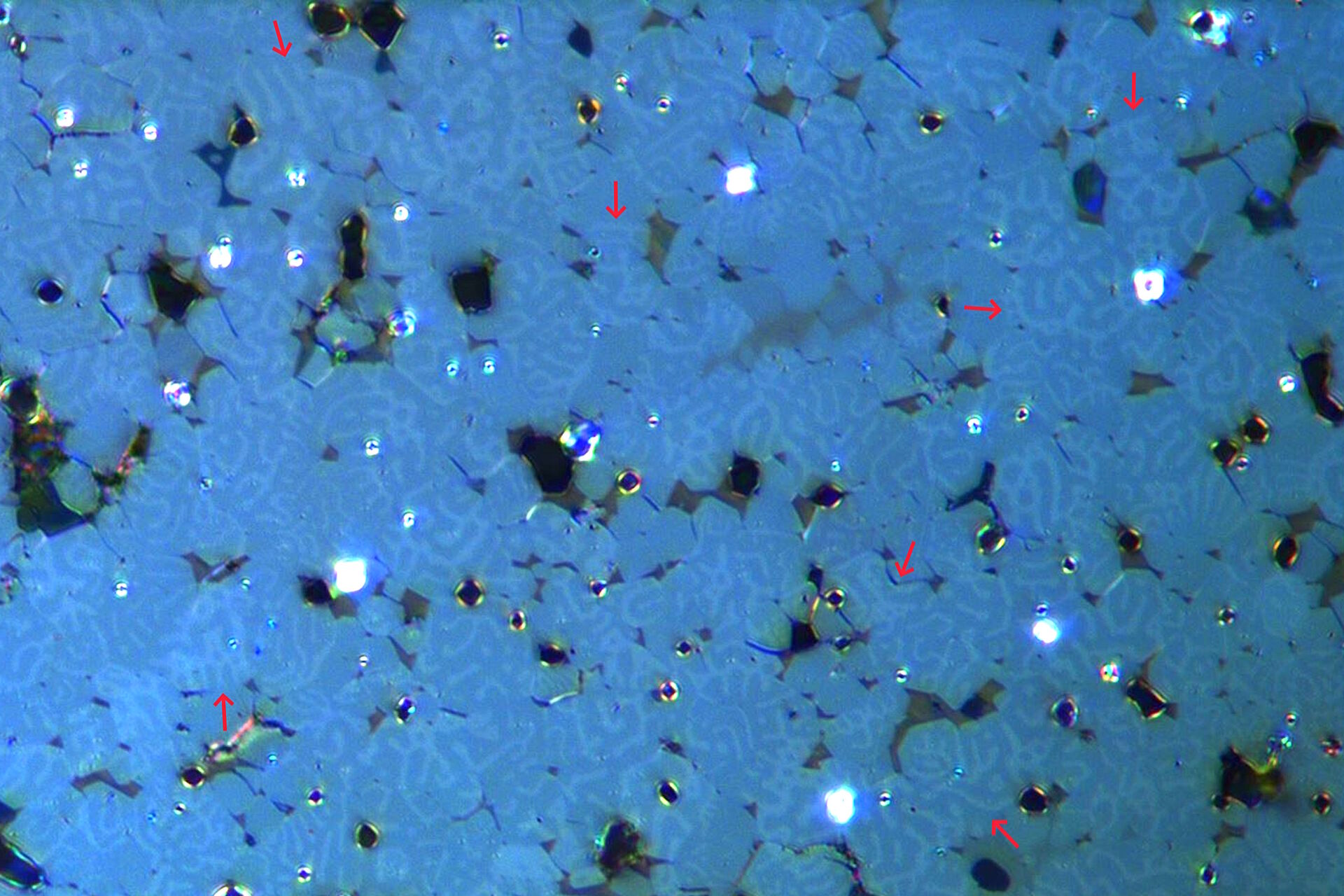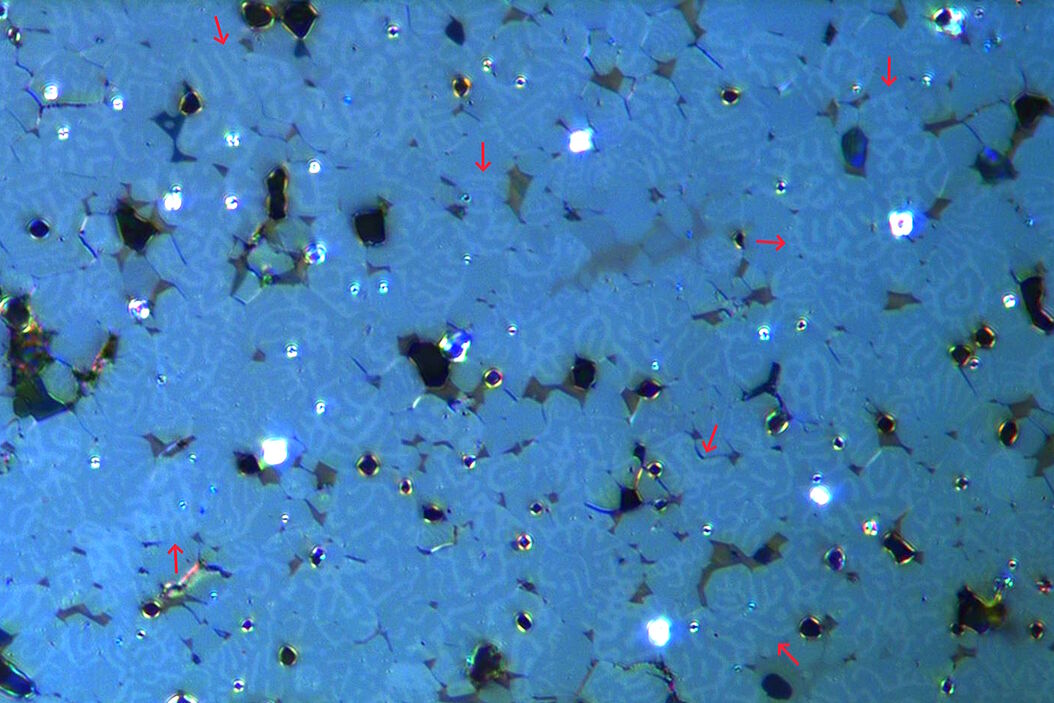The magnetic optical Kerr effect, discovered more than 150 years ago by the scientist John Kerr, is a phenomenon where the polarization plane of light rotates after reflection from the surface of a magnetic material. This effect can be exploited to visualize magnetic domains in materials, such as the grains of steel alloys. This method is called Kerr microscopy.
Kerr microscopy can be used for efficient quality control (QC), failure analysis, and research and development (R&D) of magnetic materials. One example of its application is the development of better performing steel alloys concerning electrical and electronic applications, for example, electromagnets, transformers, windings/coils, inductors, filters, and storage media.
For this work, Kerr microscopy was used to visualize magnetic domains in grains of an electrical steel alloy. Results from Kerr imaging show that magnetic domains in the grains of the steel alloy samples have light and dark patterns arising from the Kerr effect.
Now just fill in the form below and get access to the full article in order to find out more.





